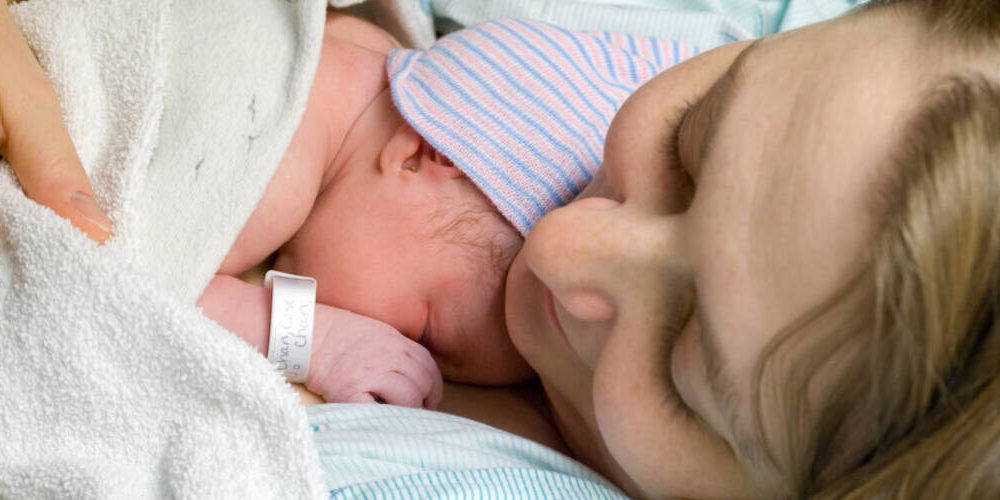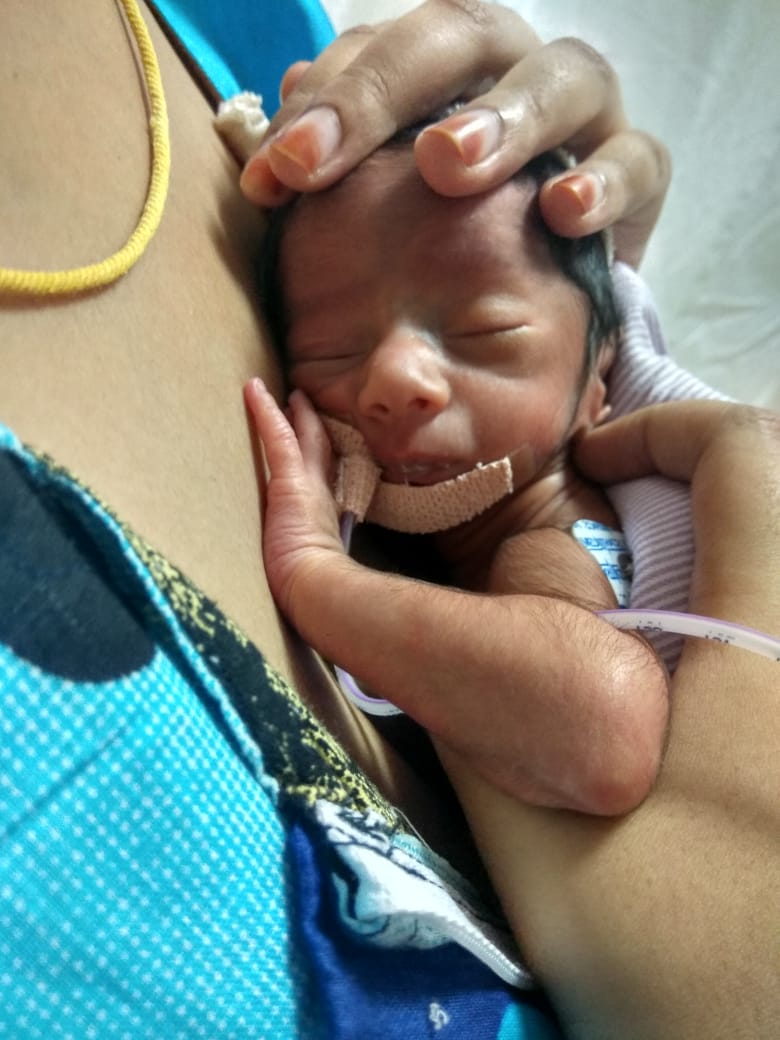
Skin-to-Skin Contact for Newborns: Essential and Beneficial
Holding a newborn and especially a premature baby against skin on the chest of a caregiver, usually a parent, immediately after birth increases the probability that the baby will grow healthier in a comprehensive way. This is what a recent study confirms and what many in the medical world had already suspected from previous examination.

A mother providing kangaroo mother care to a preterm baby (photo: Sathishsugavanam27, CC BY-SA 4.0, via Wikimedia Commons)
What’s even more exciting is that this study goes further in affirming the benefits of skin-to-skin contact for premature babies. The research shows that babies born prematurely who are placed directly on their mother’s bare chest in the minutes following their birth survive better than those placed directly in an incubator for stability.
In the randomized, controlled trial, initiating continuous kangaroo mother care – the name given to skin-to-skin contact – soon after birth in infants with a birth weight of between 1.0 and 1.799 kg (2.2 and 3.9 lb) improved neonatal survival by 25% as compared with kangaroo mother care initiated after stabilization, the approach that is currently recommended. Indeed, preterm infants usually need life-saving interventions to ensure cardiorespiratory stability, so they are routinely transferred to a neonatal intensive care unit for stabilization.
The results of this research have prompted the World Health Organization to issue new guidelines recommending that “premature babies should be given skin to skin contact immediately after birth to improve their survival and health outcomes.” In its communiqué of November 15, 2022 urging immediate skin-to-skin contact for preterm babies, the WHO “recommends that skin to skin contact, also known as ‘kangaroo mother care’, should begin immediately after these little ones take their first breath, without any initial period in an incubator. . . . These guidelines show that improving outcomes for these tiny babies is not always about providing the most high-tech solutions, but rather ensuring access to essential healthcare that is centred around the needs of families.”
But how is skin-to-skin contact beneficial exactly? One medical article puts it this way: “There is good evidence that normal, term newborns who are placed skin to skin with their mothers immediately after birth make the transition from fetal to newborn life with greater respiratory, temperature, and glucose stability and significantly less crying indicating decreased stress.” As for the mother: “Mothers who hold their newborns skin to skin after birth have increased maternal behaviors, show more confidence in caring for their babies, and breastfeed for longer durations.”
Research studies have shown that a baby’s skin-to-skin contact with the mother “stimulates a specific part of the newborn’s brain.” This stimulation provokes a number of benefits for the baby, who:
- Is better able to absorb and digest nutrients
- Maintains better body temperature through thermoregulation (balancing heat production and heat loss to maintain body temperature within the normal range)
- Cries less often
- Demonstrates faster weight gain
- Experiences more stable heartbeat and breathing
- Has higher blood oxygen levels
- Enjoys long-term benefits, such as improved brain development and function as well as parental attachment
- Is more successful at breastfeeding immediately after birth
- Spends increased time in the very important deep sleep and quiet alert states
- Develops stronger immune systems
Another recent study revealed that premature babies “who received 60- or 120-minute kangaroo care sessions demonstrated improvements in their attention, response to external stimulus, reflexes, and quality of movements.” It adds that further skin-to-skin benefits for babies include:
- Earlier discharge from the hospital
- Lower pain response to heel lancing (the conventional method of obtaining blood samples in week-old infants)
- More regular breathing patterns
- Reduced stress, as measured by cortisol levels (the primary stress hormone)
Increasing evidence shows that mental and behavioral problems in children born preterm last into adulthood. So it’s very good news that the long-term benefits of kangaroo mother care extend into adulthood. One study reports that, “babies who got Kangaroo Mother Care are more likely to live into their 20s, have bigger brains and score slightly higher on intelligence. They tend to be better socially adjusted adults, showing less aggressiveness, impulsiveness, hyperactivity and antisocial behavior.”
Stemming from such a basic, simple practice, these benefits are positive news indeed.

